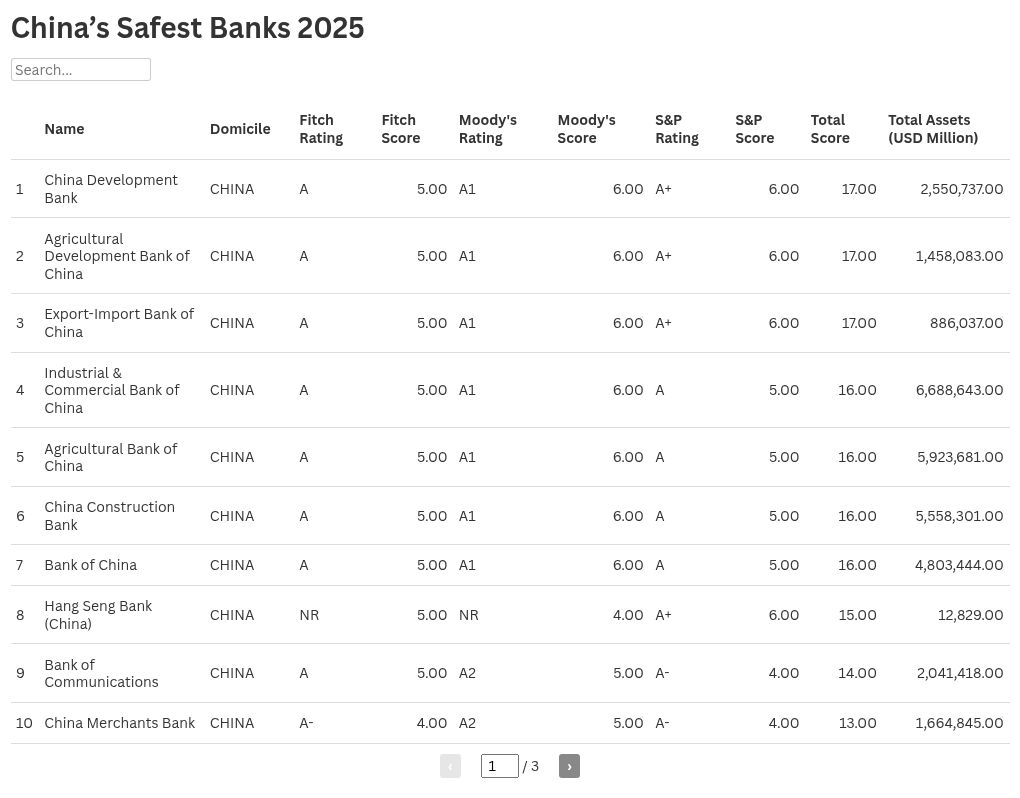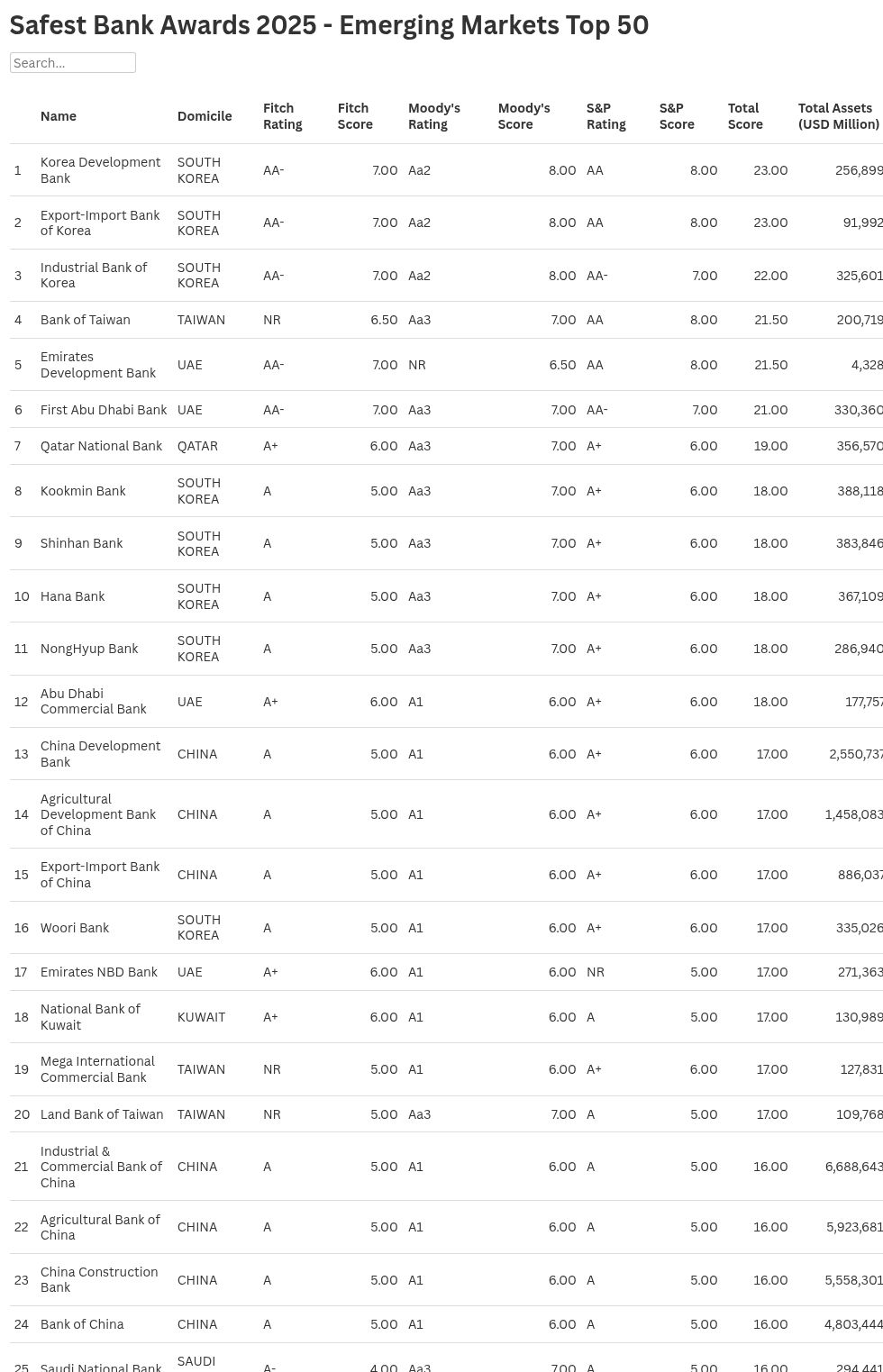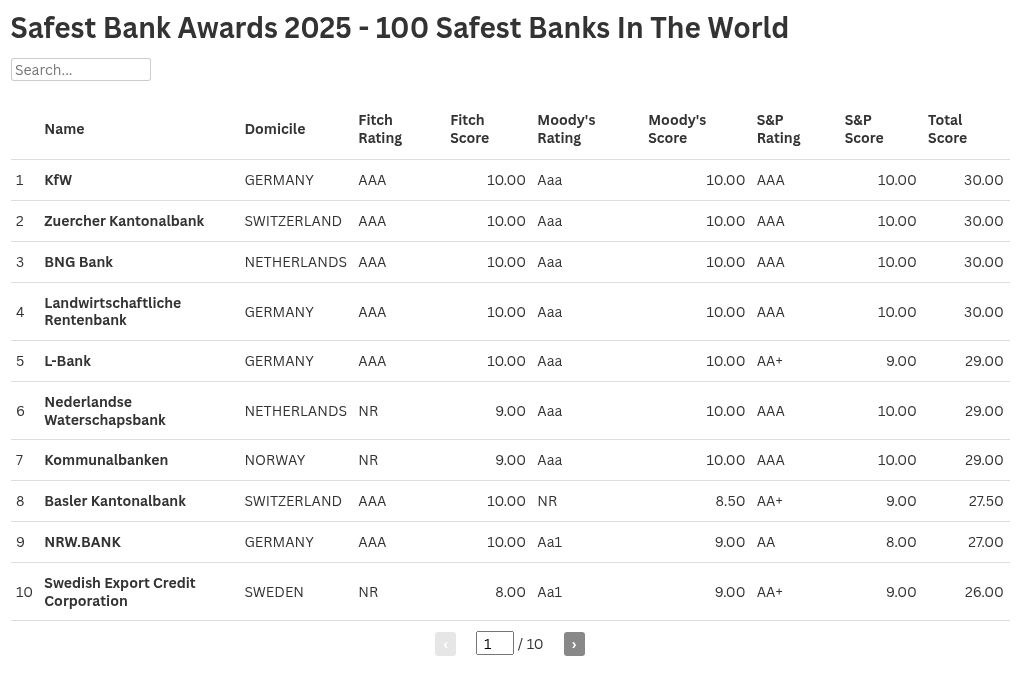Global Finance presents this year’s 25 safest banks in China.
As the US trade war with China continues to escalate, with each side ramping up export restrictions on specific products and commodities, a satisfactory resolution seems unlikely. The US has announced plans to impose a 100% tariff on Chinese imports in November, following China’s expansion of export controls on rare earth commodities used in semiconductor and chip production.
As this issue goes to press, global attention is fixed on South Korea, where Chinese President Xi Jinping and US President Donald Trump are set to hold talks, with an opportunity for progress in resolving trade tensions. In the run-up to this meeting, there are no signs that both sides wish to defuse the situation. But, new US tariffs continue to emerge that are further increasing pressure and threatening to leave any agreement wobbly. These include new US duties on lumber, kitchen cabinets, upholstered furniture, and used cooking oil, while both sides have added fees on port docking for ships. In the meantime, China is forging more-durable trade pacts with other countries.
The trade war represents a significant concern for the Chinese banking sector, given its large base of commercial and corporate clients that provide services and manufacturing across many industries.
However, China’s trade volume has held up despite the ongoing tariff war with the US. Foreign trade grew during the first nine months of 2025 by 4% year over year, with exports rising more than 7%, even as exports to the US dropped 33% in August and 27% in September, according to China’s General Administration of Customs. Some of this growth is attributable to the front-loading of trade volume as tension has heated up, but China is also adapting to trade disruptions by strengthening its global trade alliances and establishing new supply chains. It has increasingly redirected exports to Europe and Southeast Asia, with trade volumes to those regions rising over 14% and close to 16%, respectively.
While these moves have softened the impact of US trade policy, Chinese banks continue to weather a sluggish domestic economy while facing a struggling real estate sector plagued by oversupply, shrinking investment, and developer insolvency. Overall, GDP growth is forecast to fall from 5% in 2024 to 4.8% in 2025 and further decline to 4.2% in 2026, according to the International Monetary Fund’s October World Economic Outlook. Additionally, weak domestic demand is a headwind as retail sales fall due to declining consumer confidence. Structural issues persist, related to low wage growth and high youth unemployment that rose to 19% in August for those aged 16-24, according to China’s National Bureau of Statistics.
Banks are faced with contracting loan growth that continues to pressure net interest margins and overall profitability. To shore up the sector, officials launched a $72 billion bank recapitalization plan earlier in the year to enhance capital buffers and stimulate growth by supporting more lending. This primarily benefits the largest state-owned institutions. The smaller, midtier banks in the lower half of our rankings are also struggling amid the slowing economy but have comparatively fewer resources to dedicate to growth initiatives.
An overall deterioration in China’s credit fundamentals prompted Fitch to downgrade the country’s sovereign rating in April to A from A+. As a rationale for the move, the agency cites “a continued weakening of China’s public finances and a rapidly rising public debt trajectory during the country’s economic transition.”
Additionally, “Sustained fiscal stimulus will be deployed to support growth, amid subdued domestic demand, rising tariffs, and deflationary pressures.” Fitch adds that “this support, along with a structural erosion in the revenue base, will likely keep fiscal deficits high.” Following this action, the agency downgraded China Development Bank, Agricultural Development Bank of China, and Export-Import Bank of China.
In May, Fitch upgraded China Minsheng Bank one notch to BBB-, citing the bank’s progress in expanding its franchise with market share gains in loans and deposits as well as its involvement with government initiatives to support micro and small enterprises. In June, Moody’s initiated coverage of the bank with a Baa3 rating. These developments helped the bank reach No. 17 in our rankings as a new entrant this year.
For Bank of Ningbo, S&P assigned a first-time rating of BBB, which helped the bank to move up three spots to No. 15. Bank of Beijing benefitted from a one-notch Fitch upgrade to BBB-, which the agency attributed to the “steady increase in its regional significance in recent years, as well as its close relationship with the Beijing municipal government,” which represents one of China’s most resilient economies. Consequently, Bank of Beijing cracks our ranking this year at No. 25.
Methodology
The scoring methodology for China’s Safest Banks follows what we used in our other Safest Banks rankings. A rating of AAA is assigned a score of 10 points and AA+ receives nine points, down to BBB- worth one point. BB+ is with -1 point, and so on. When a bank has only two ratings, an implied score for the third rating is calculated by taking the average of the other two scores and deducting one point. When a bank has only one rating, an implied score for the second rating is calculated by deducting one point from the actual rating, and an implied score for the third rating is calculated by deducting two points from the actual rating.








